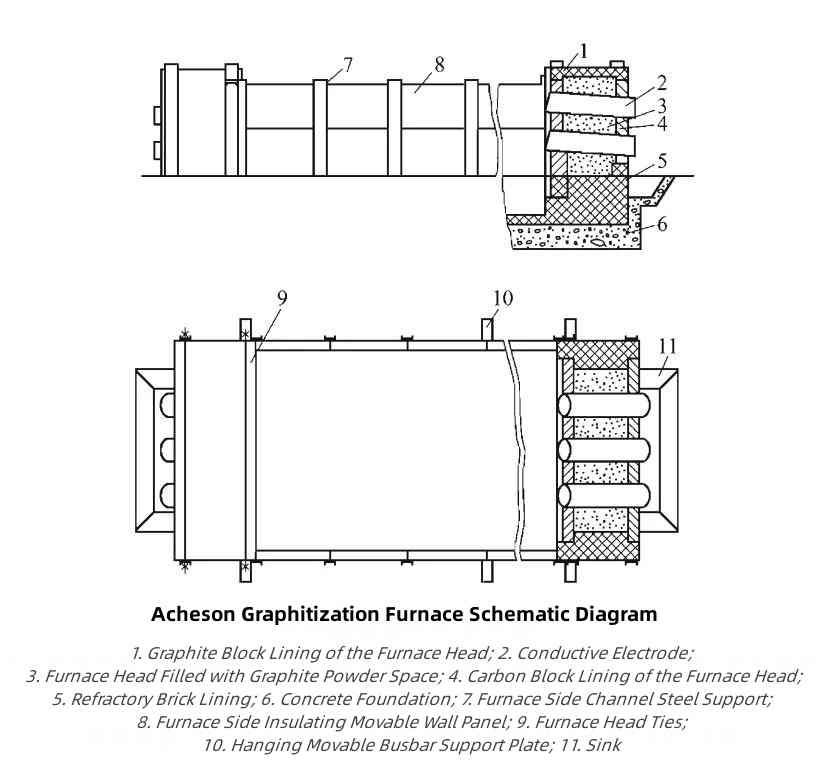【Acheson Graphitization Furnace】Structure Overview

【Acheson Graphitization Furnace】Structure Overview
The Acheson Graphitization Furnace (as shown in the figure below) is composed of a refractory-lined hearth (constructed on a reinforced concrete foundation) and two end walls with built-in conductive electrode assemblies, distributed in a rectangular layout. The purpose of the end walls is to secure the conductive electrode assemblies, with the outer sides constructed using refractory bricks or carbon blocks, and the inner sides lined with graphite blocks. The central portion of the wall is filled with graphite powder to create a sealed filler space. Several conductive electrodes (graphite electrodes) penetrate the end walls, and the diameter and quantity of the conductive electrodes depend on the current intensity during the electrification of the graphitization furnace. As the electrodes continuously heat up during electrification, cooling is required for the conductive electrodes.

The sidewalls of the furnace are constructed using refractory bricks on both sides, and refractory concrete wall panels can also be vertically placed on both sides of the furnace instead of brick walls. The purpose of the sidewalls is to ensure the space occupied by the loaded products and auxiliary materials.
Small Acheson Graphitization Furnaces have a furnace body length of 10-12m, a furnace body width of around 1m, and can accommodate approximately 20 tons of calcined products per batch. Medium-sized Acheson Graphitization Furnaces have a furnace body length of 14-16m, a furnace body width of around 3m, and can accommodate 40-50 tons of calcined products per batch. Large Acheson Graphitization Furnaces have a furnace body length of 18-20m, a furnace body width of around 4m, and can accommodate around 100 tons of calcined products per batch.
The Acheson Graphitization Furnace is the most widely used graphite furnace globally. Invented in 1895, it quickly gained popularity worldwide and dominated the graphite furnace industry for a considerable period. Over the past century, the Acheson Graphitization Furnace has undergone continuous improvement and refinement, evolving from alternating current (AC) furnaces to direct current (DC) furnaces, marking a significant technological breakthrough. Although key technical indicators (such as power-on time and unit power consumption) and product quality have seen substantial improvements, inherent drawbacks of the Acheson Graphitization Furnace, such as low thermal efficiency, limited production capacity, and uneven temperature distribution, persist. The application of interconnected graphite furnaces has put an end to the dominance of the Acheson Graphitization Furnace. International graphite market information, follow us to learn more.
No related results found








0 Replies